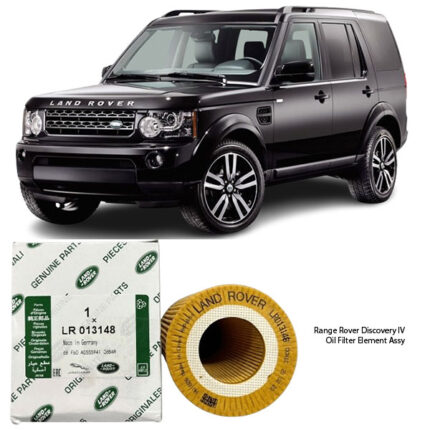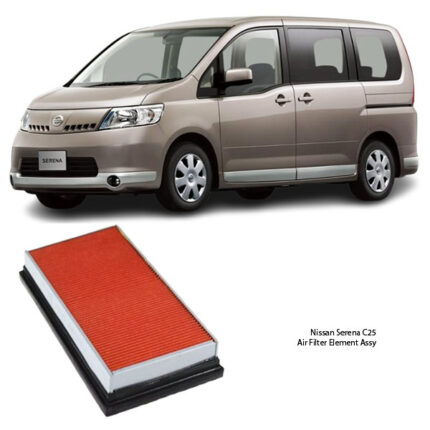-17%
Get Land Rover Discovery III Cabin Filter (Air-Con) JKR500020 in Kenya
The cabin air filter is an essential yet often overlooked component of your vehicle’s air conditioning (A/C) and ventilation system. It plays a vital role in keeping the air inside your car clean and free of dust, pollen, pollutants, and even odors. If you’ve ever noticed a musty smell, weak airflow, or increased allergy symptoms while driving, your cabin filter might be clogged or dirty.
In this detailed guide, we’ll cover everything you need to know about the cabin air filter, including its function, types, replacement process, maintenance, signs of failure, and benefits. Let’s dive in! 🚗💨
What is a Cabin Air Filter? 🤔🔧
A cabin air filter is a filter element placed inside the HVAC (Heating, Ventilation, and Air Conditioning) system of a vehicle. It traps dust, pollen, bacteria, and other airborne particles, preventing them from entering the car’s cabin through the air vents.
Key Functions of the Cabin Filter:
✔️ Filters Pollutants – Blocks harmful particles like dust, mold, pollen, and smog.
✔️ Improves Air Quality – Provides clean, fresh air inside the cabin.
✔️ Reduces Odors – Some filters come with activated carbon to absorb bad smells.
✔️ Prevents HVAC Damage – Keeps debris from clogging the A/C evaporator and fan.
✔️ Enhances Driving Comfort – Especially beneficial for passengers with allergies or respiratory issues.
Types of Cabin Air Filters 🏎️🛠️
Cabin air filters come in different materials and designs. Choosing the right one depends on your driving conditions, climate, and air quality needs.
1️⃣ Particulate Filters 🌫️
- Made from paper or fiber-based materials.
- Captures dust, pollen, and debris but not odors.
- Common in most vehicles.
2️⃣ Activated Carbon Filters 🏭
- Contains charcoal layers to absorb gases and odors.
- Filters out smoke, exhaust fumes, and unpleasant smells.
- Ideal for driving in cities with high pollution levels.
3️⃣ Electrostatic Filters ⚡
- Uses electrostatic charge to attract fine particles.
- More effective at trapping bacteria, mold spores, and allergens.
- Great for those with allergies.
4️⃣ HEPA Filters (High-Efficiency Particulate Air) 🌿
- Highest filtration efficiency, removing up to 99.97% of particles.
- Blocks bacteria, viruses, and ultrafine pollutants.
- Best for extreme air pollution areas or health-conscious drivers.
How to Replace a Cabin Air Filter 🔧🚗
Replacing your cabin air filter is one of the easiest car maintenance tasks you can do yourself. Most filters last between 12,000 – 15,000 miles (19,000 – 24,000 km) or about once a year, but this varies depending on your environment.
Tools Needed:
✅ A new cabin air filter (check your owner’s manual for specifications).
✅ A screwdriver (if required).
✅ A vacuum or cleaning cloth (to remove any debris).
Step-by-Step Replacement Guide 🛠️
1️⃣ Locate the Cabin Air Filter 📍
- Most cars have it behind the glove box, under the dashboard, or in the engine bay near the windshield.
2️⃣ Remove the Glove Box (If Necessary) 🗄️
- Some cars require removing screws or clips to access the filter housing.
3️⃣ Take Out the Old Filter 🚮
- Carefully pull out the dirty filter and note its orientation (airflow direction is important).
4️⃣ Clean the Housing 🧹
- Use a vacuum or damp cloth to remove dust, leaves, and debris.
5️⃣ Install the New Cabin Filter 🆕
- Insert the new filter in the correct airflow direction (indicated by arrows on the filter).
6️⃣ Reassemble Everything 🔩
- Secure the filter cover and put the glove box back in place.
7️⃣ Test the A/C System ❄️
- Turn on the air conditioning and check for proper airflow and fresh air quality.
💡 Tip: If you drive in areas with heavy pollution or frequent dust, consider replacing your filter twice a year.
Signs of a Dirty or Failing Cabin Air Filter 🚨
If your cabin air filter is dirty or clogged, you’ll notice the following symptoms:
🔹 Reduced Airflow – Weak A/C performance and less air coming from vents.
🔹 Bad Odors – Musty or moldy smell inside the car.
🔹 Increased Allergy Symptoms – More sneezing, coughing, or itchy eyes while driving.
🔹 Foggy Windows – Poor ventilation can lead to condensation on windows.
🔹 Noisy Fan Operation – Straining noises from the A/C fan due to restricted airflow.
🚗 Ignoring a clogged cabin filter can strain your A/C system, leading to costly repairs!
Benefits of Regular Cabin Filter Replacement 🌟
Replacing your cabin air filter regularly has several benefits, including:
✔️ Healthier Air Quality – Protects passengers from allergens and pollutants.
✔️ Better HVAC Efficiency – Helps maintain strong airflow and cooling performance.
✔️ Prevents Mold Growth – Reduces damp conditions that encourage mold in the HVAC system.
✔️ Eliminates Bad Odors – Especially useful in humid climates.
✔️ Prolongs A/C System Life – Keeps the fan and evaporator clean, reducing strain.
Cabin Air Filter vs. Engine Air Filter: What’s the Difference? 🤔
Many people confuse the cabin air filter with the engine air filter. Here’s how they differ:
| Feature | Cabin Air Filter 🌬️ | Engine Air Filter 🚗 |
|---|---|---|
| Function | Filters air entering the cabin | Filters air entering the engine |
| Location | HVAC system (dashboard/glove box) | Engine bay |
| Filters | Dust, pollen, mold, odors | Dirt, debris, insects |
| Replacement | 12,000-15,000 miles | 15,000-30,000 miles |
Both filters are essential for clean air and vehicle performance.
Upgrading Your Cabin Air Filter: Is It Worth It? 🚀
If you drive in high-pollution areas, suffer from allergies, or want the best air quality, consider upgrading to:
✅ HEPA Cabin Filters – Maximum filtration against allergens and fine particles.
✅ Activated Carbon Filters – Best for reducing odors and chemical pollutants.
✅ Reusable/Washable Filters – Some high-end filters can be cleaned and reused.
While premium filters cost more, they last longer and provide superior air quality.
Conclusion 🎯
The cabin air filter is a small but important component that ensures clean and fresh air inside your vehicle. Regular replacement improves air quality, enhances A/C performance, and prevents costly HVAC issues.
💡 Key Takeaways:
✅ Replace your cabin filter every 12,000 – 15,000 miles or at least once a year.
✅ Choose the right filter based on your driving environment.
✅ Watch for reduced airflow, bad odors, and allergy symptoms.
✅ Upgrading to carbon or HEPA filters provides better air quality.
By keeping your cabin air filter clean, you’ll enjoy a fresher, healthier, and more comfortable drive!
Follow us on Facebook for more parts.



